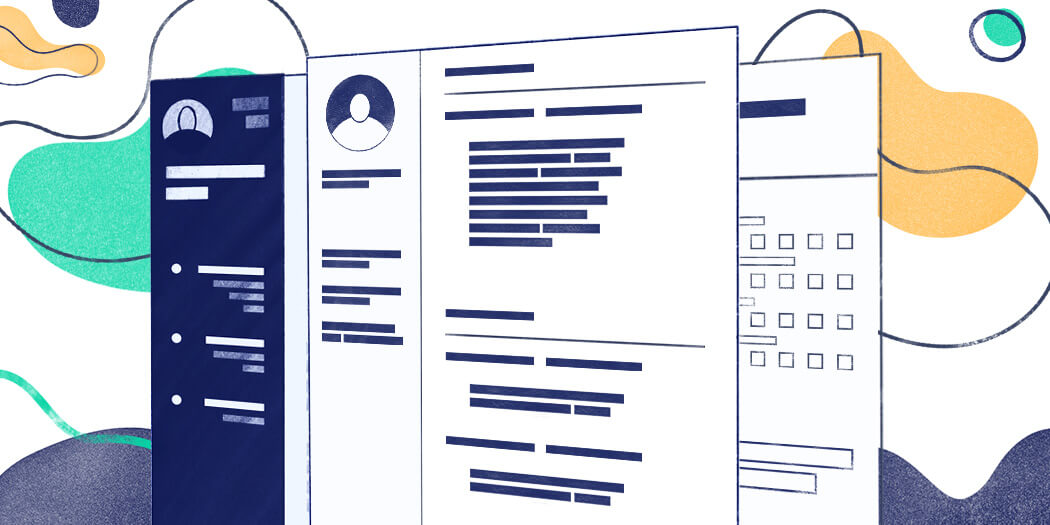
Entry Level CV Examples, Template & Tips for Beginners
How to write a first job CV, or an entry-level CV, especially when other candidates have experience? This guide shows you.

Christian Eilers
Career Expert
Every detail matters:
If you mess up your CV header, the recruiter will think you’re sloppy—
Without even reading a single word on your document.
So make sure to design the best professional CV header out there.
In this guide you’ll learn:
Save hours of work and get a CV like this. Pick a template, fill it in. Quick and easy. Choose from 21 CV templates and download your CV now.

What users say about ResumeLab:
I had an interview yesterday and the first thing they said on the phone was: “Wow! I love your CV.”
Patrick
I love the variety of templates. Good job guys, keep up the good work!
Dylan
My previous CV was really weak and I used to spend hours adjusting it in Word. Now, I can introduce any changes within minutes. Absolutely wonderful!
George
CV header is the section that tops your CV and serves as a business card of a sort. It’s where you put your name and job title along with your contact details such as your phone number, email address, or LinkedIn URL.
Here’s how to make a CV header:
Here’s an example of a good header for a CV:
Mary Butler
Business Analyst
+1-727-203-7931
mary.butler@gmail.com
linkedin.com/in/marybutler
The CV header above follows this template:
[Name]
[Job Title]
[Phone Number]
[Email]
[LinkedIn]
Even though the professional CV header template above only lists some basic information, you’re free to include additional info, too.
For example, your CV heading template could also consist of:
Expert Hint: Make sure your CV has everything it needs. Our guide on what to put on a CV will help you.
The only rule that matters when writing a CV header is relevance.
So—
Limit yourself to including the information that’s relevant to the job offer.
For example, if the job offer says only local applicants will be considered, it’s actually a good idea to include your address in the CV header.
Applicants for creative positions may want to show off their portfolios. If that’s the case, there’s nothing wrong with adding such social media handles as Instagram or Pinterest.
And one more thing:
A CV header should be visually appealing and easy to find for someone who’s looked at your CV for the first time.
Why?
Well, you don’t want the recruiter to be unable to quickly get in touch with you, do you?
Here’s a couple of ideas on how you can format your CV header:
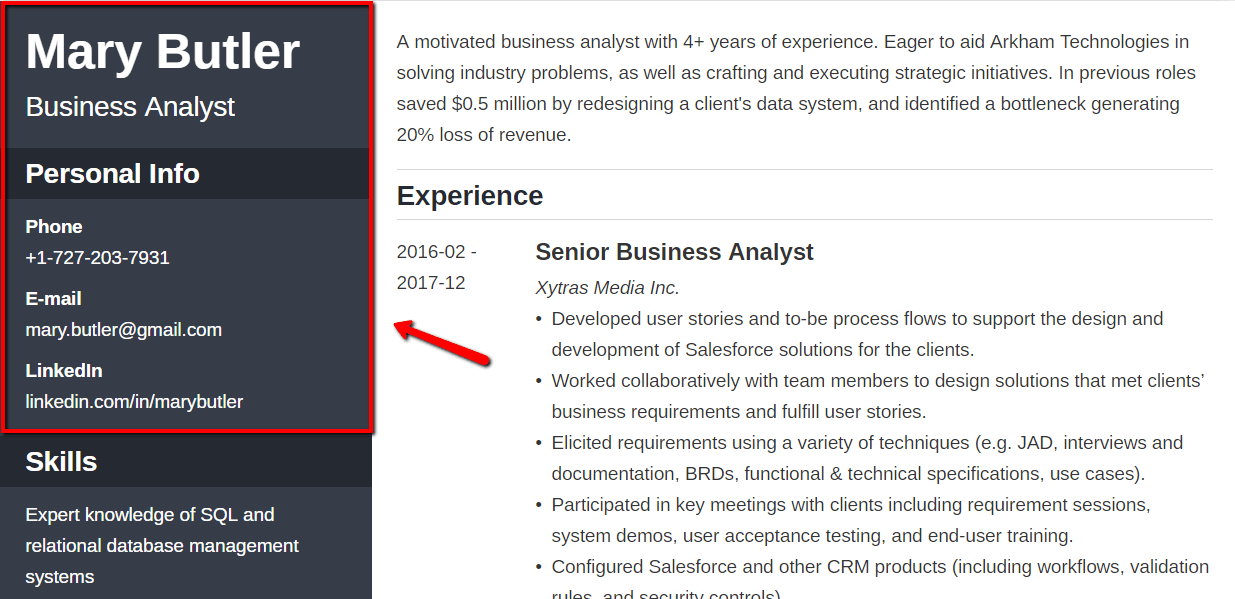
This simple header of a CV is placed in the sidebar on the left.
This way the main section of the CV gains extra space and all the contact details are placed in the top right corner of the document where they’re easy to find.
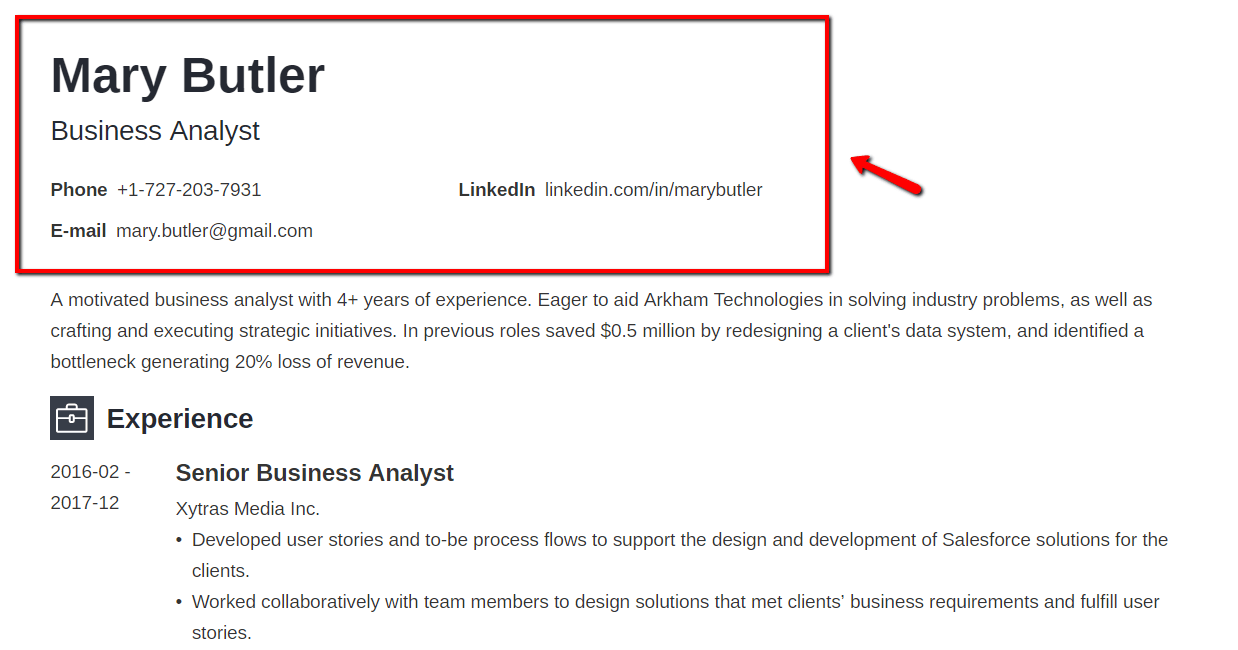
This CV header sample is simple and clean.
It’s located at the very top of the CV with all the contact details in plain view.
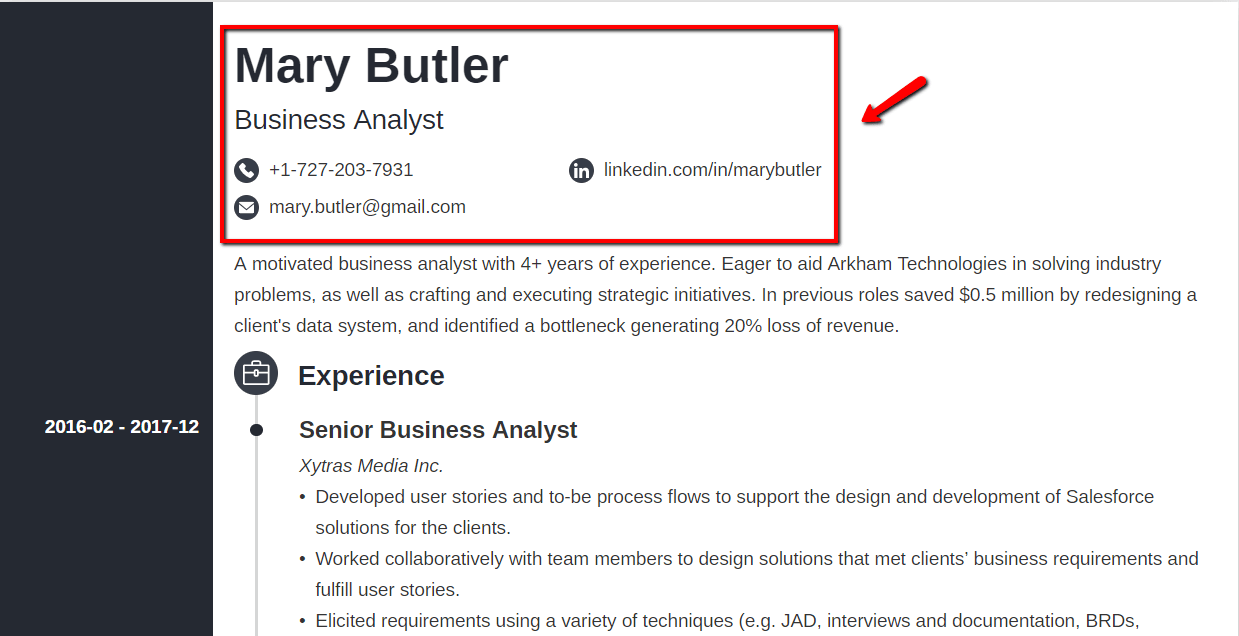
This example of a good CV header includes graphical elements in the form of icons.
Again, all the contact details are easy to find and clearly visible.
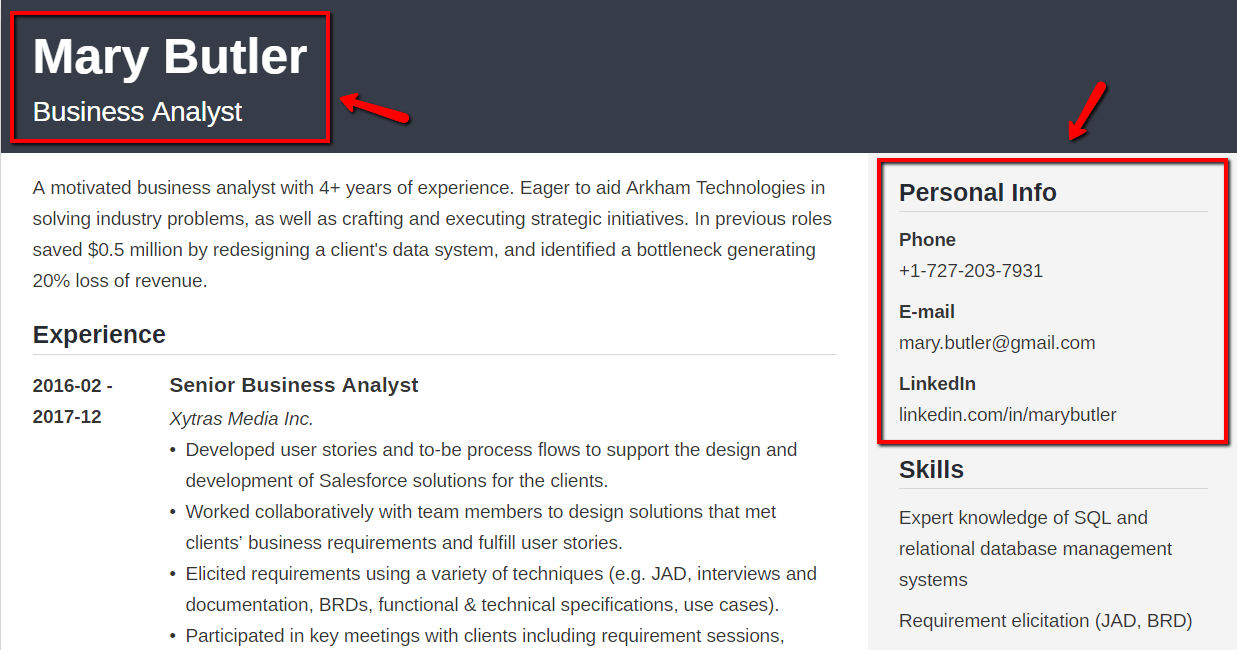
This last CV header design is split into two separate sections.
The name and job title come up top in a designated horizontal bar, whereas the contact details can be found in the sidebar under the personal info label.
Remember:
The best CV headers are the ones that look professional and are easy to find on your CV, just like the ones you can see in the examples above.
Expert Hint: The section that comes right after the CV header is called the CV profile, and it’s a short rundown of your entire CV. Make sure yours is nothing short of awesome.
Finally—
Let’s address several questions that might be troubling you:
Yes, the heading of your cover letter should match your CV header.
Why?
Your job application consists of two documents that complement each other: a cover letter and a CV. As such, they both should have matching document heading styles.
Expert Hint: Cover letters matter, even in 2024. Learn how to write a job-winning cover letter from our dedicated guide.
The answer to this question is pretty straightforward:
The CV header on page 2 should look exactly the same as on page one.
Why?
It’s practical. If the recruiter is reading page two of your CV and they want to get in touch with you, the only thing they need to do is look at the top of the page.
Plus—
If for some reason page one of your CV goes missing, your contact details won’t be lost forever. They’ll still be visible in the header on the second page of your CV.
Expert Hint: Not sure what the perfect length for your CV is? Our dedicated guide has all the answers.
Here’s the thing—
Make sure your CV heading does not include:
Why?
Adding a photo can inadvertently bias the recruiter.
So, if the job offer doesn’t specifically state you should include a photo, don’t do this. After all, what matters is what you can do rather than what you look like.
As to the word CV itself—
The recruiter knows it’s a CV so you don’t really need to inform them. Plus, it’s a waste of space.
Also, see to it that your CV header is free from any unprofessional or irrelevant details such as:
Note: You can find some of the information above in the so-called biodata, which is a counterpart of the US CV in India and other Asian countries. However, none of this should make its way into a CV header that you send to a US employer.
The ResumeLab builder is more than looks. Get specific content to boost your chances of getting the job. Add job descriptions, bullet points, and skills. Easy. Improve your CV in our CV builder now.
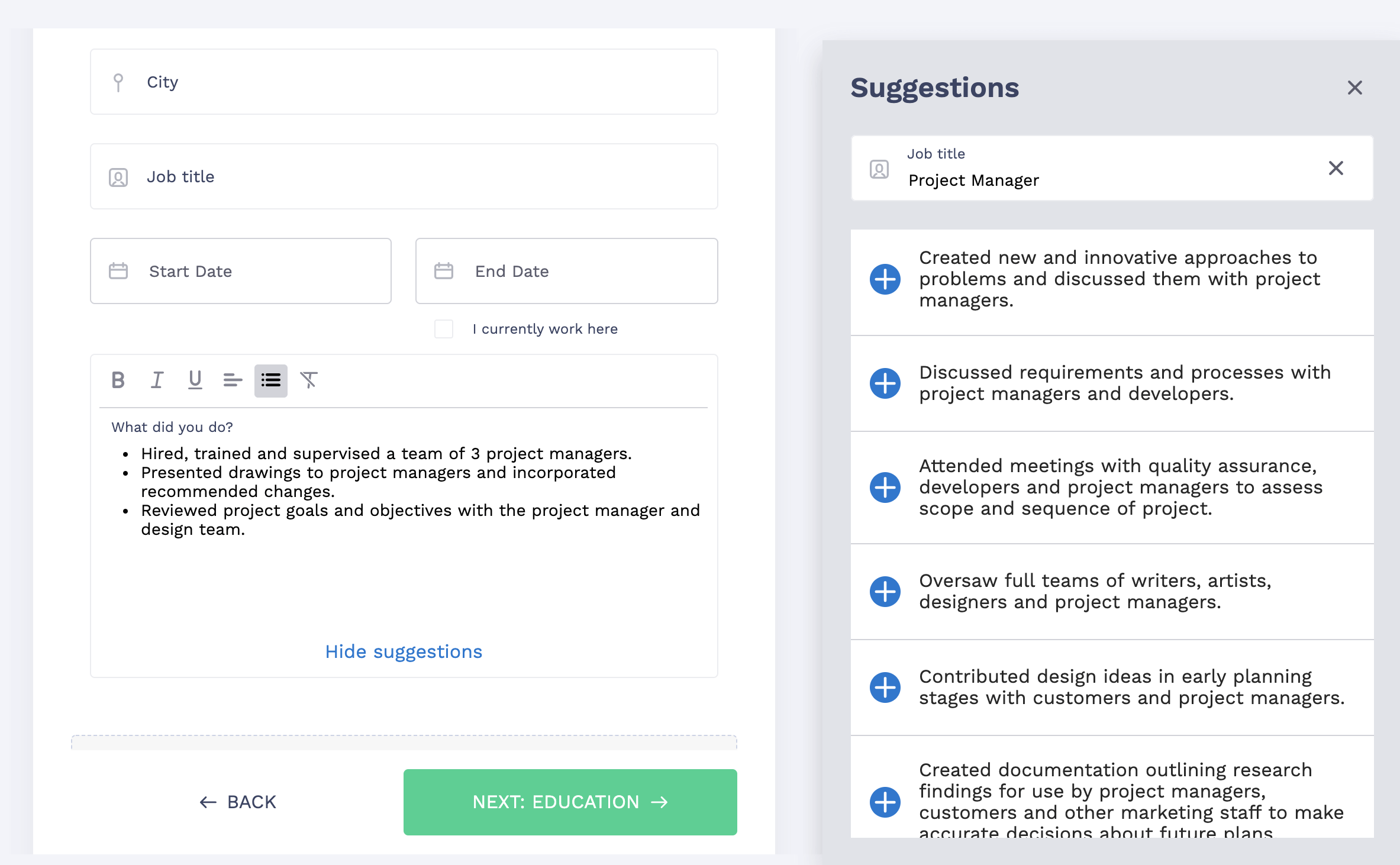
Nail it all with a splash of colour, choose a clean font, highlight your skills in just a few clicks. You’re the perfect candidate and we’ll prove it. Use the ResumeLab builder now.
Expert Hint: If you’re looking for more specific information on how to write a CV, check out our CV examples for 50+ different professions.
Here’s a quick tutorial on how you can make a basic CV header in Word.
Let’s stick to the basic CV header template you can find at the top. Simply copy-paste it into a new MS Word file.
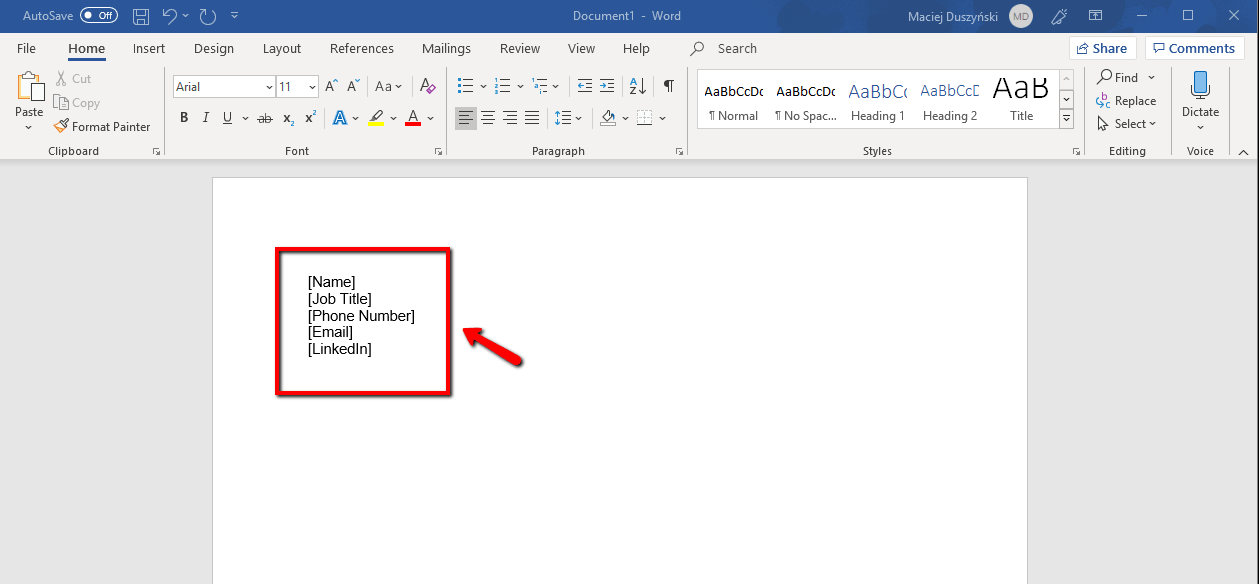
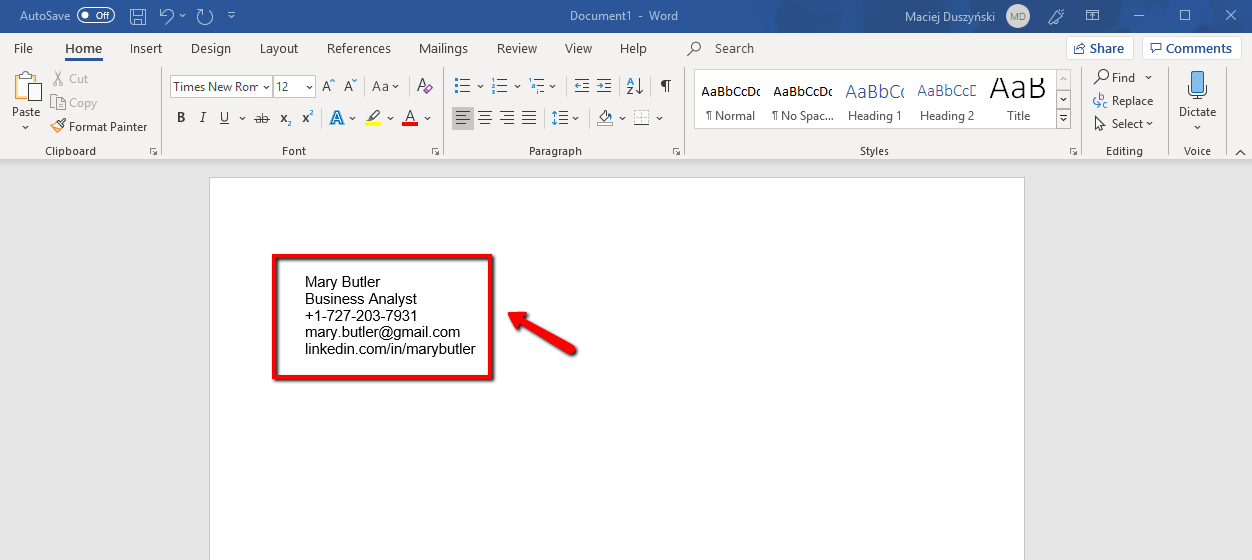
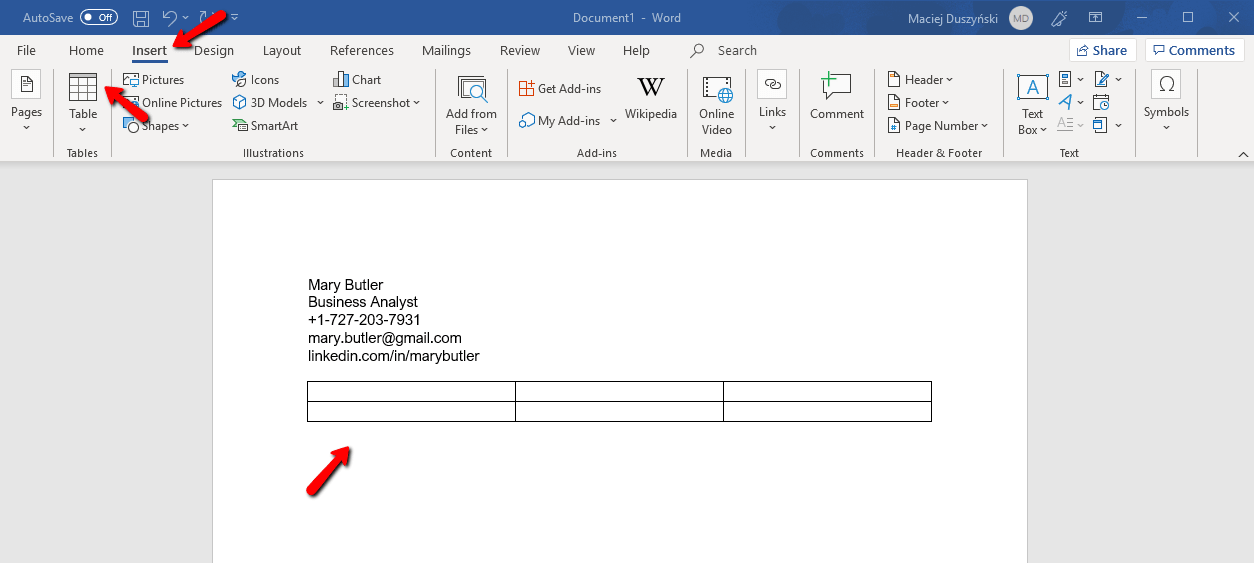
Select the top row cells and in the right-click mouse menu select the “Merge cells” option.
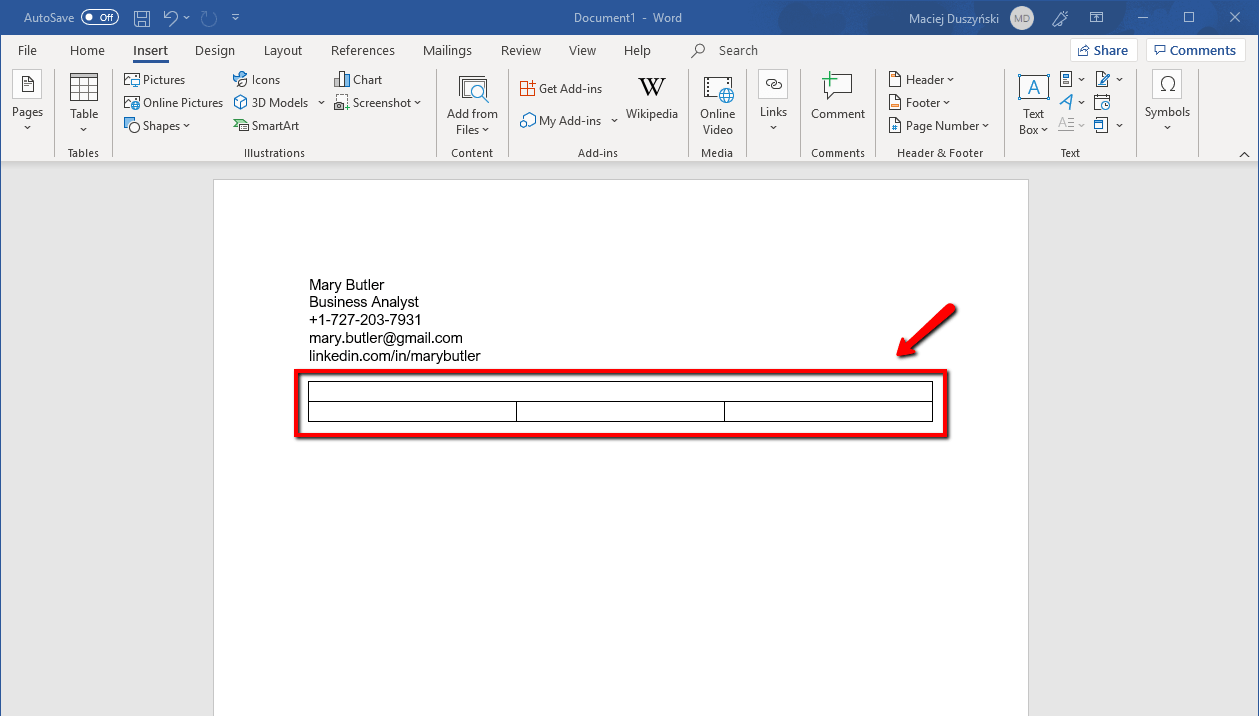
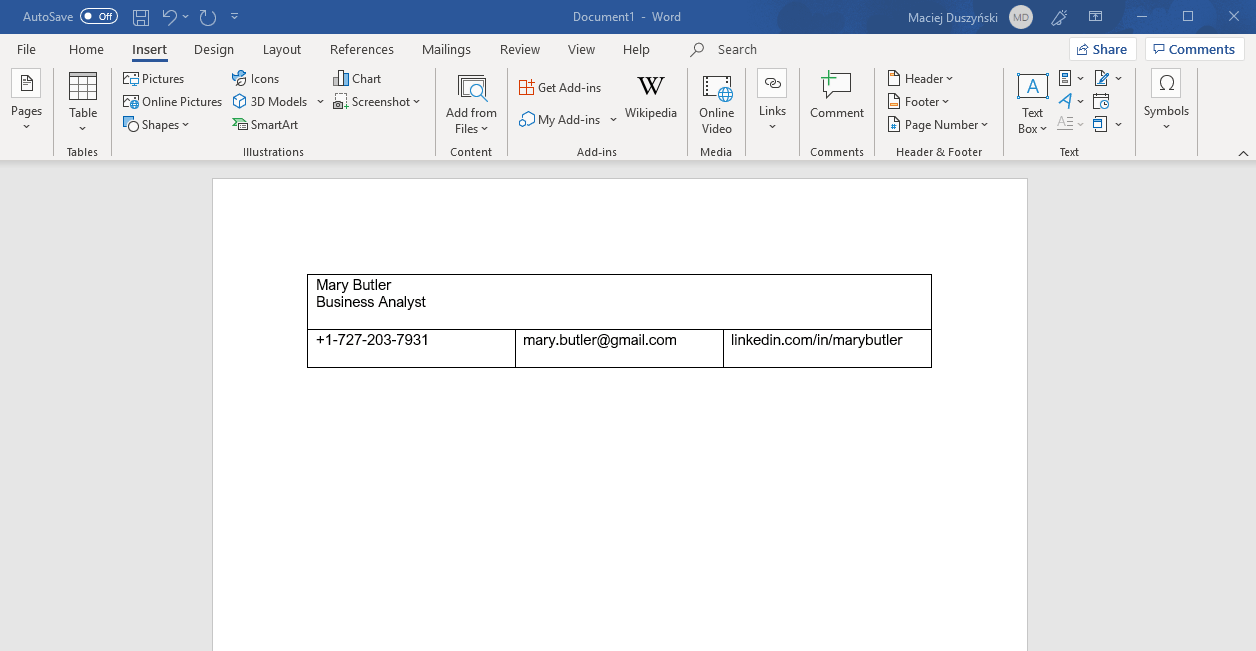
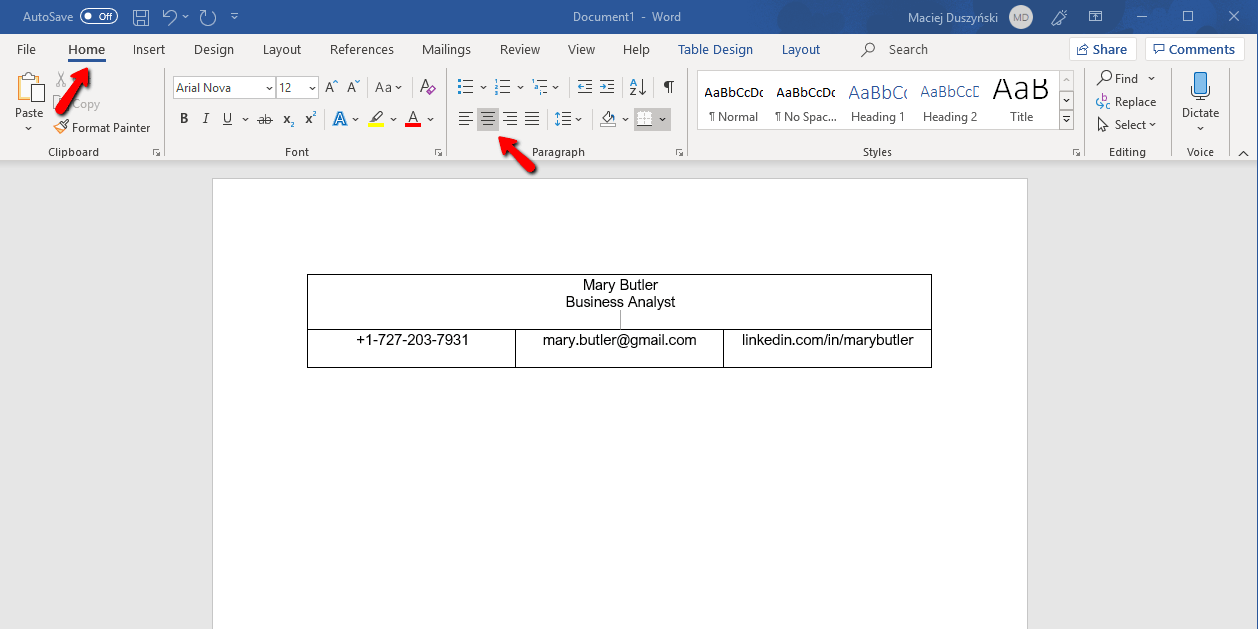
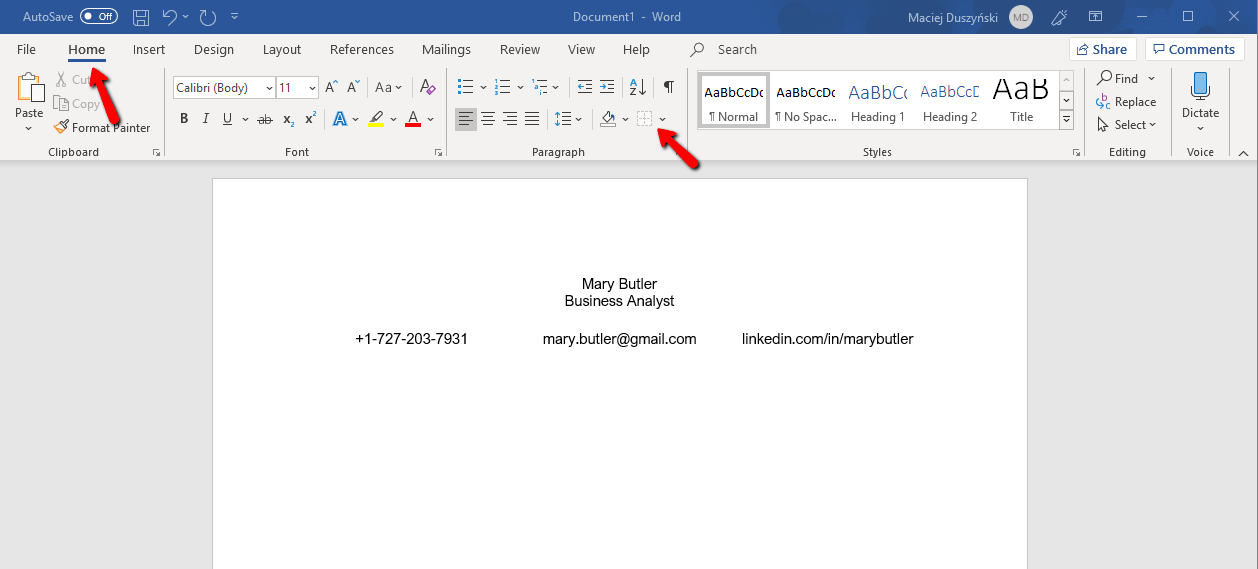
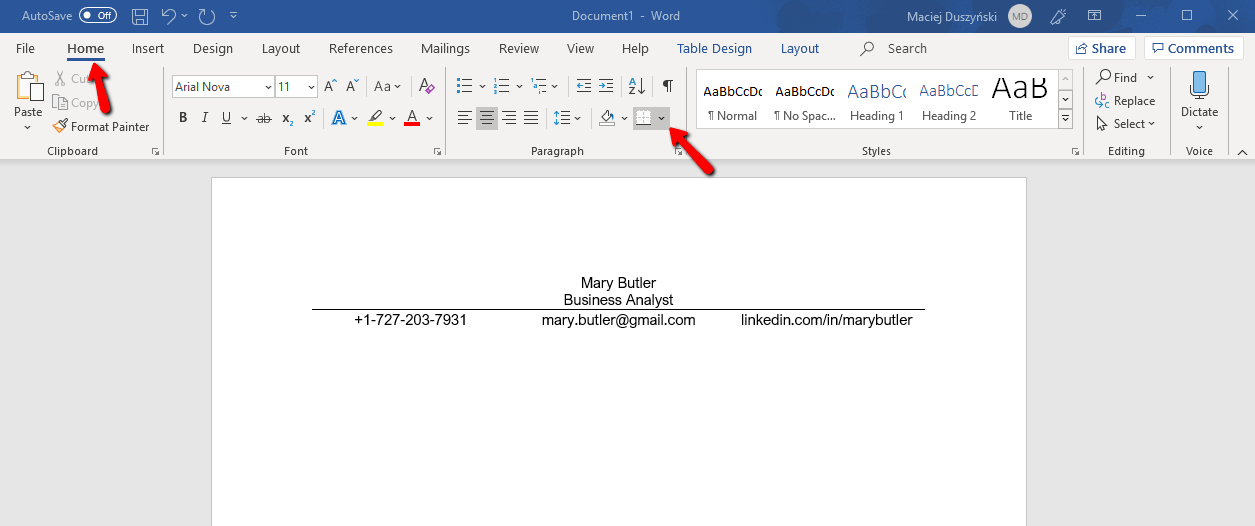
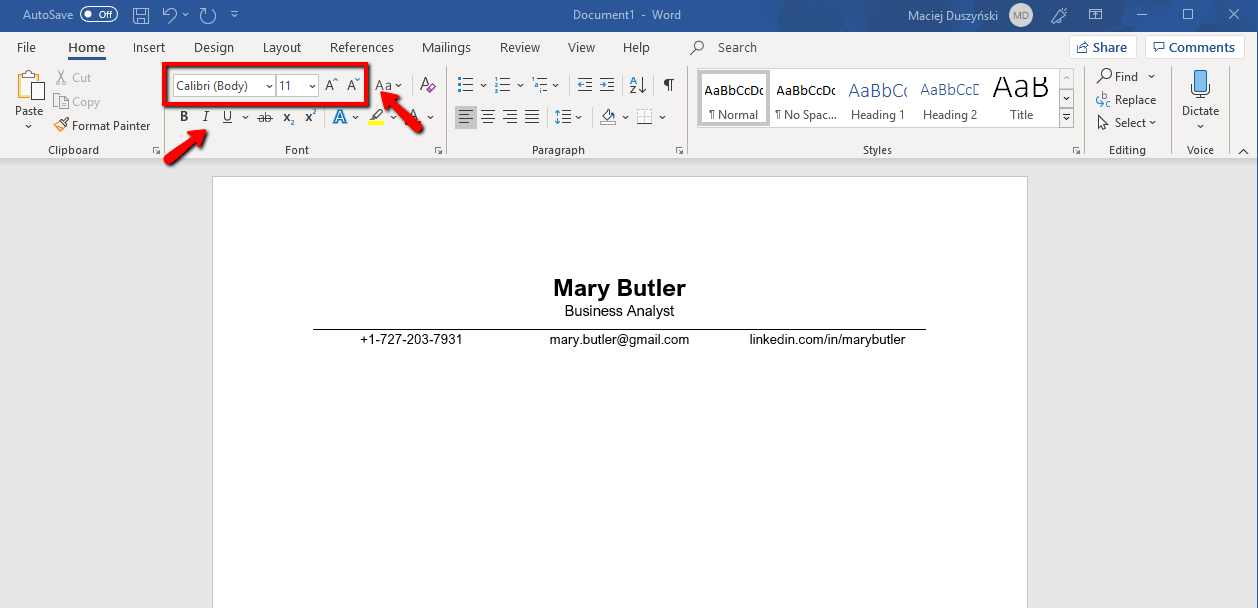
In the example above, I changed the CV fonts to Arial Nova, set the font size to 11pt, then bolded the name, increased the font size to 16pt, and reduced the font size below the line to 9pt.
I also added an extra line of text just below the job title, left it empty, and changed the font size to 6pt to push the horizontal line down a little.
And this is it—
That’s how you can make a simple CV header in Word. You can also get a free MS Word CV Template if you want to speed things up.
Expert Hint: If you’re not sure what kind of CV you need, check out our guide on how to choose the best CV format.
Take your time to experiment with different CV heading styles and try to find the best font for your CV header to make it look good.
And once you come up with a CV header you’re happy about, head straight to our guide to learn how to make a perfect CV.
Double your impact with a matching CV and cover letter combo. Use our cover letter builder and make your application documents pop out.
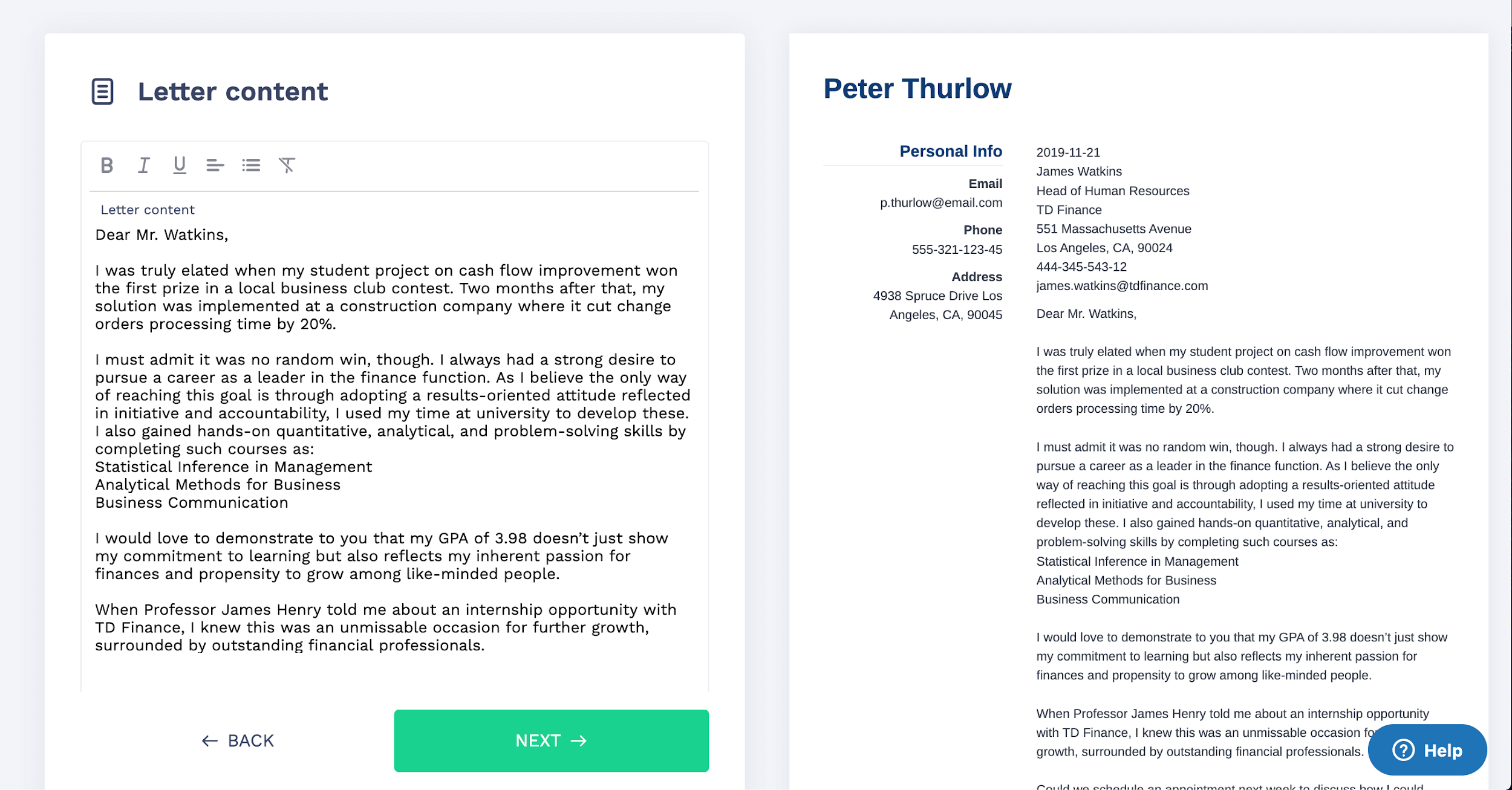
Want to try a different look? There’s 18 more. A single click will give your document a total makeover. Pick a cover letter template here.
Here’s a summary of how to make a CV header:
Do you have any other questions about making a CV header? Would you like to share your advice? We’re always happy to hear from you. Give us a shout out in the comments below.
At ResumeLab, excellence lies at the heart of our values, underpinning our promise to provide outstanding career resources. Our team of career experts meticulously assesses each article in line with our editorial guidelines, guaranteeing our content's high quality and dependability. We consistently engage in original research, illuminating the nuances of the job market and earning acclaim from various influential news outlets. Our commitment to delivering professional career advice draws millions of readers to our blog annually.

How to write a first job CV, or an entry-level CV, especially when other candidates have experience? This guide shows you.

Christian Eilers
Career Expert
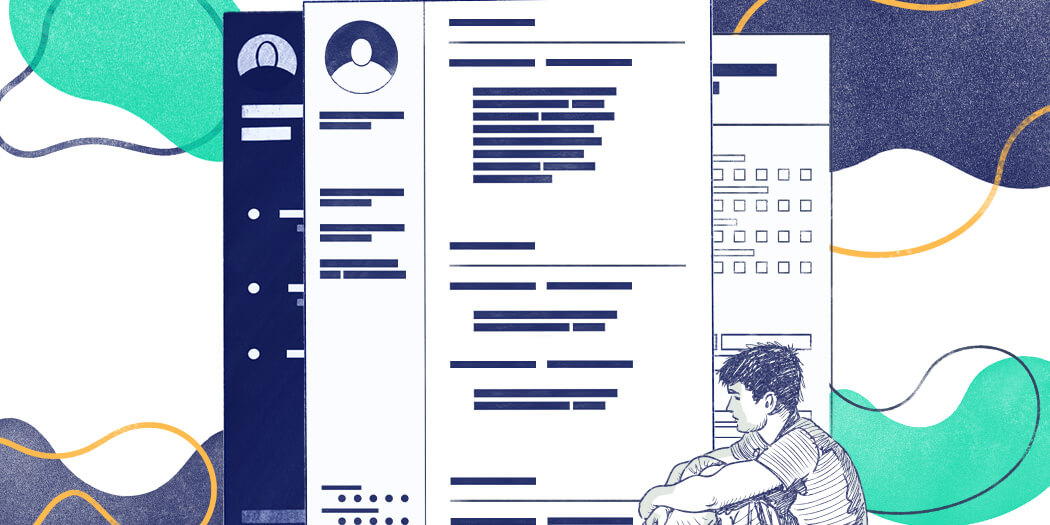
Learn how to write a CV for a teenager with no experience, employers will respect. Write your teen CV fast, with tonnes of UK teenage CV samples.

Tom Gerencer
Career Expert
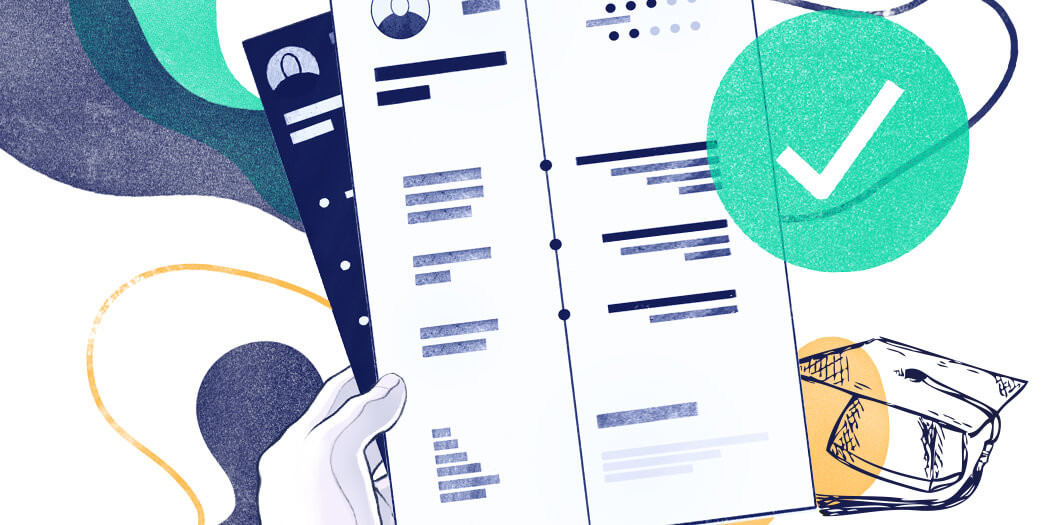
You’re ready to take your place in the P60 world, but they don’t know it yet. Prove you can slug it out with experienced candidates with this hireable university student CV example.

Tom Gerencer
Career Expert